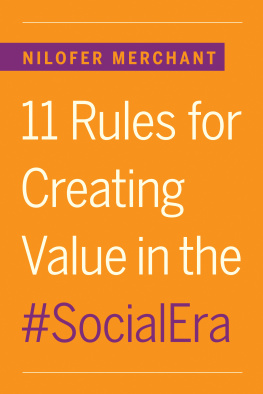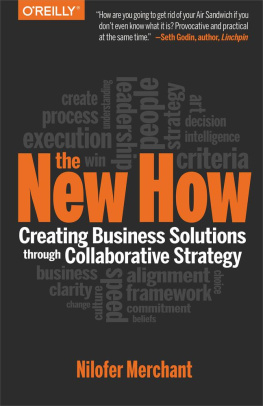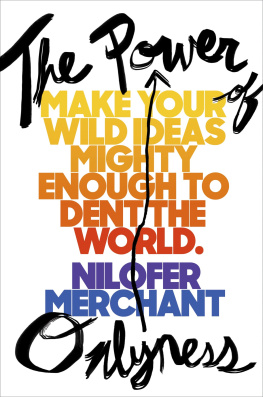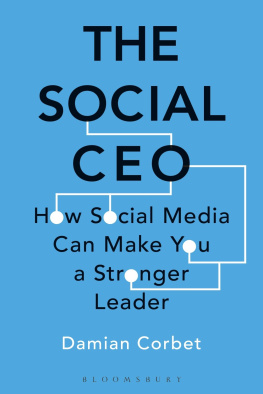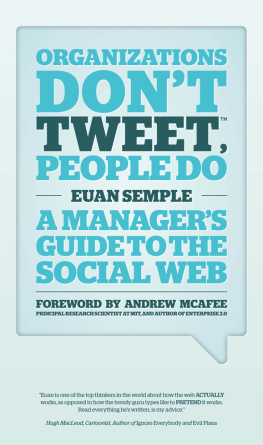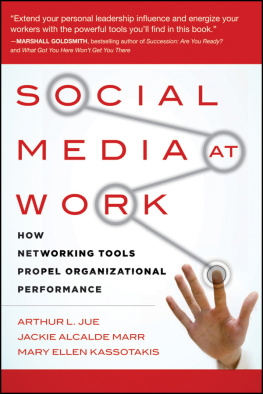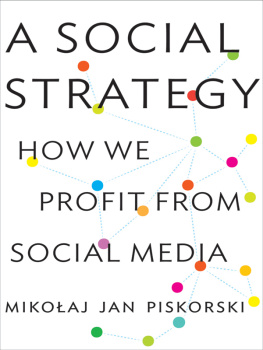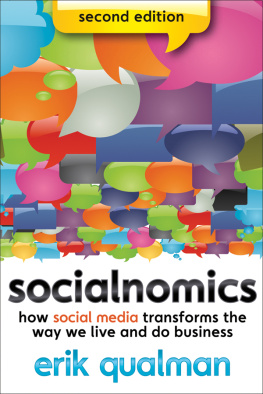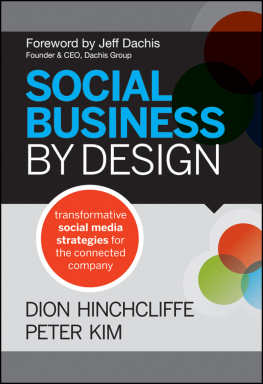Nilofer Merchant - 11 Rules for Creating Value in the Social Era
Here you can read online Nilofer Merchant - 11 Rules for Creating Value in the Social Era full text of the book (entire story) in english for free. Download pdf and epub, get meaning, cover and reviews about this ebook. publisher: Harvard Business Review Press, genre: Business. Description of the work, (preface) as well as reviews are available. Best literature library LitArk.com created for fans of good reading and offers a wide selection of genres:
Romance novel
Science fiction
Adventure
Detective
Science
History
Home and family
Prose
Art
Politics
Computer
Non-fiction
Religion
Business
Children
Humor
Choose a favorite category and find really read worthwhile books. Enjoy immersion in the world of imagination, feel the emotions of the characters or learn something new for yourself, make an fascinating discovery.
- Book:11 Rules for Creating Value in the Social Era
- Author:
- Publisher:Harvard Business Review Press
- Genre:
- Rating:3 / 5
- Favourites:Add to favourites
- Your mark:
11 Rules for Creating Value in the Social Era: summary, description and annotation
We offer to read an annotation, description, summary or preface (depends on what the author of the book "11 Rules for Creating Value in the Social Era" wrote himself). If you haven't found the necessary information about the book — write in the comments, we will try to find it.
In 11 Rules for Creating Value in the Social Era, the newest in Harvard Business Reviews line of digital books (HBR Singles), social strategist and insightful blogger Nilofer Merchant argues that social is much more than media. Smart companies are letting social become the backbone of their business models, increasing their speed and flexibility by pursuing openness and fluidity. These organizations dont operate like the powerful 800-pound gorillas of yesteryearbut instead act more like a herd of 800 gazelles, moving together across a savannah, outrunning the competition.
This ebook offers new rules for creating value, leading, and innovating in our rapidly changing world. These social era rules are both provocative and grounded in realitythey cover thorny challenges like forsaking hierarchy and control for collaboration; getting the most out of all talent; allowing your customers to become co-creators in your organization; inspiring employees through purpose in a world where money alone no longer wields that power; and soliciting community investment in an idea so that it can take hold and grow.
The strategies of the Industrial Eraor even the Information Agewill not be enough for the Social Era. Read 11 Rules for Creating Value in the Social Era to get ready to meet the challenges of this new age and thrive.
HBR Singles provide brief yet potent business ideas, in digital form, for todays thinking professional.
Editorial Reviews
Named a Best Business Book of 2012 by Fast Company
Ms. Merchants new work provides a provocative vision of the future of both what organizations and what work might look like, yet grounded in real businesses todaythis will inspire ideas and thought about what running a business really means. Forbes.com
Every CEO, CMO, and decision maker needs to read this. Nilofer has taken a high-level concept and made it abundantly clear how to implement this big idea. Tara Hunt, cofounder and CEO, Buyosphere; author, The Whuffie Factor: Using the Power of Social Networks to Build Your Business
A rare combination: strategic, well researched, and actionable. Nilofer Merchant helps executives see whats at stake in the connection economy. Seth Godin, author, Meatball Sundae: Is Your Marketing Out of Sync?
Traditional strategy is dead. But do not fearNilofer Merchant shows how your organization can thrive with the new rules of the Social Era. Buy yourself a copyand one for every member of your board. Charlene Li, founder, Altimeter Group; author, Open Leadership: How Social Technology Can Transform the Way You Lead; and coauthor, Groundswell
Social media is not about hooking up online. Its becoming a new means of production and engagement. Nilofer lays out her enormously helpful 11 Rules to embrace the Social Era. Don Tapscott, coauthor, Macrowikinomics: Rebooting Business and the World
Pay attention to Nilofer Merchant. Or risk obsolescence. Dave Gray, Senior Vice President, Dachis Group
Nilofer Merchant nails it in this important and timely book. Its an insightful road map. through the new world of business that embraces openness, stability, sustainable advantages, profitability, and the new value chain.
Nilofer Merchant: author's other books
Who wrote 11 Rules for Creating Value in the Social Era? Find out the surname, the name of the author of the book and a list of all author's works by series.

